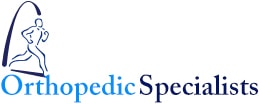Indications
Bankart lesions can result from a single dislocation or from recurrent dislocations. Because of the loss of anterior stability when the labrum is torn, recurrent and painful anterior dislocations are likely if the lesion is not repaired. An inferior capsular shift is not always necessary, especially if the Bankart lesion is the result of an acute injury (chronic injuries gradually attenuate the anterior ligaments and capsule necessitating an inferior shift procedure). The rehabilitation guidelines are the same whether the capsular shift is performed or not.
Surgical Procedure
A Bankart lesion is a disruption or tearing of the anterior labrum of the glenoid fossa. It is generally the result of an anterior glenohumeral dislocation or from chronic dislocations. The surgical approach is anterior, through the deltopectoral groove. The surgeon incises both the subscapularis and the anterior glenohumeral ligaments and capsule to expose the glenoid rim. Repair of the Bankart lesion involves re-approximating the labrum utilizing internal fixation such as screws or anchors. To help prevent recurrence, the anterior capsule is reinforced using a portion of the inferior capsule. Specifically, the inferior capsule is detached from the humerus, shifted superiorly, and sutured back to the humerus overlapping the anterior capsule. The result is a double layer of tissue reinforcing the Bankart repair. The subscapularis is then repaired as is the skin. The patient is placed in a shoulder immobilizer with the shoulder at the side and internally rotated to the chest.
Post-Operative Rehabilitation
2 Weeks Post-op
The patient is instructed to wear the shoulder immobilizer at all times except when exercising.
The patient is cautioned against any external rotation beyond neutral as this would risk rupture of the subscapularis repair and the capsular shift. The patient is also cautioned against active or resisted internal rotation secondary to the subscapularis repair.
PROM in all other planes is permitted. Active forward flexion and abduction are permitted if the arm is held in the internal rotation secondary to the subscapularis repair.
PROM in all other planes is permitted. Active forward flexion and abduction are permitted if the arm is held in internal rotation throughout the arc.
Icing or TENS may be initiated to help minimize the postoperative pain.
3 – 6 Weeks Post-op
Active internal and external rotation of the shoulder is initiated. Note: It is critical to avoid abduction and external rotation at the same time. This is very stressful to the repaired structures and can attenuate the capsular shift. Active external rotation to neutral with forward flexion and scaption (a position between forward flexion and abduction) and external rotation beyond neutral with the shoulder adducted may be initiated.
5 – 6 Weeks Post-op
Passive external rotation can be initiated. It is important to have good communication with the surgeon, as progression to full passive external rotation will vary with the severity of the lesion. A gentle conservative approach would involve self passive external rotation stretching and pulleys.
Combining the stretch with heat or ultrasound helps to further stretch the tight tissues. External rotation should still be done with the shoulder adducted.
Unrestricted active and PROM may be initiated. Note: Abduction may remain limited until external rotation improves.
6 – 8 Weeks Post-op
Continue to emphasize regaining external rotation both actively and passively.
Begin isometric exercises, every day, emphasizing the subscapularis and pectoralis major. The patient should perform 3 – 5 sets of 10 – 12 repetitions, providing resistance with the uninvolved hand or a wall. Each set should be performed with the arm in varying positions to allow strengthening to occur throughout the arc.
By 8 weeks, the subscapularis should be well healed and more aggressive strengthening can be initiated using hand weights or exercise tubing. Strengthening should be performed every other day. Again, 3 – 5 sets of 10 -12 repetitions is recommended.
8 – 12 Weeks Post-op
Continue strengthening and consider a formal work conditioning or upper extremity strength building program. A structured program, supervised by an experienced therapist, is necessary to safely regain strength while minimizing the chance of injury to the involved musculature.
A gradual return to sports after 12 weeks is permitted.
By 12 weeks, combined abduction and external rotation can be performed; however, resistance in this position is the most common cause of anterior dislocations. Even after discharge from therapy, the patient should be cautious when strengthening, performing active exercise, or going about normal daily activity with the arm in abduction and external rotation.
Begin to incorporate gentle throwing activities. This is an excellent exercise as it requires flexibility in external rotation and strength in internal rotation.
Considerations
Essentially, the only motions not allowed in the early weeks are active internal rotation and active and passive external rotation beyond neutral. Although painful, patients are generally able to function very well with these limitations and routinely remove the shoulder immobilizer for activity. They must be reminded at each visit to wear the immobilizer to prevent external rotation. Inadvertently answering a ringing telephone or catching a falling object could result in rupture of the surgery.
Regaining external rotation and abduction can be a challenge. A strong home program of heat, PROM and weighted stretches is essential for a good result.
